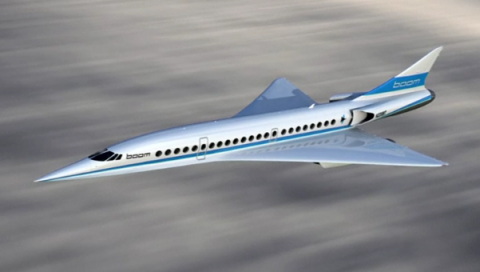
Reuters — Colorado-based start-up Boom Supersonic is hoping to compete with the major airline companies by developing a new supersonic passenger jet.
If successful, their supersonic airliner will fly 2.6 times faster than any other aircraft on the market today. Hitting speeds up to 1,451 miles per hour, the planes could reduce typical New York to London flight times of seven hours to little more than three hours. Boom is aiming to test their XB-1 aircraft, a sub-scale sized supersonic demonstrator, next year.
The concept of passengers travelling faster than the speed of sound was largely mothballed after Concorde was permanently grounded in 2003 after a series of incidents, including the fatal crash of an Air France Concorde just after take-off from Paris Charles de Gaulle airport in 2001, that killed all 109 on board and four people on the ground.
According to founder and chief executive officer, Blake Scholl, the world is crying out for a new form of supersonic travel.
“Fifty years after Concorde was designed, it’s time for a faster airplane,” Scholl told Reuters at the Paris Air Show which runs until June 25.
“What we’re doing at Boom is building a new generation of supersonic airplane; think Concorde but dramatically more affordable and actually a little bit faster too, like New York to London in three-hours fifteen minutes.”
Scholl added that he envisions tickets costing about the same as today’s business class seats.
The company currently has just a few dozen staff members but has raised more than $40 million USD in private funding to develop the prototype XB-1, nicknamed “Baby Boom.”
“That’s our one-third scale prototype for the production passenger airliner. It’s going to fly Mach 2.2, so that’s ten percent faster than Concorde or 1,451 miles per hour. We’re starting assembly of that airplane later this year and it’s going to take flight towards the end of next year,” said Scholl.
The company says the XB-1 features a refined wing shape to improve aerodynamics, light-weight materials that can withstand supersonic flight, and an efficient propulsion system that, unlike Concorde, requires no afterburner so significantly improves fuel economy.
Despite their small size, Boom believes it’s got what it take to compete with the major players of aeronautics, such as Boeing and Airbus. Scholl highlights other smaller-sized companies, such as billionaire Elon Musk’s quest to develop a cost effective and re-usable space rocket.
“There’s been a lot of inspiration from rockets where you had an upstart in SpaceX that did some things that the big players couldn’t do,” said Scholl. “I think it’s time for a new player like that in the airplane space, something that will produce a better aircraft, more efficiently than big players can make it.”
Boom’s XB-1 demonstrator is scheduled to make its maiden flight in late 2018. If all goes according to plan, Scholl hopes investors will flock to help turn his dream of a supersonic passenger jet into reality.
“We’ve raised 41 million dollars to date, which more than funds that first airplane through its first supersonic flight,” he said. “To build a production passenger airliner obviously needs a lot more capital.”








